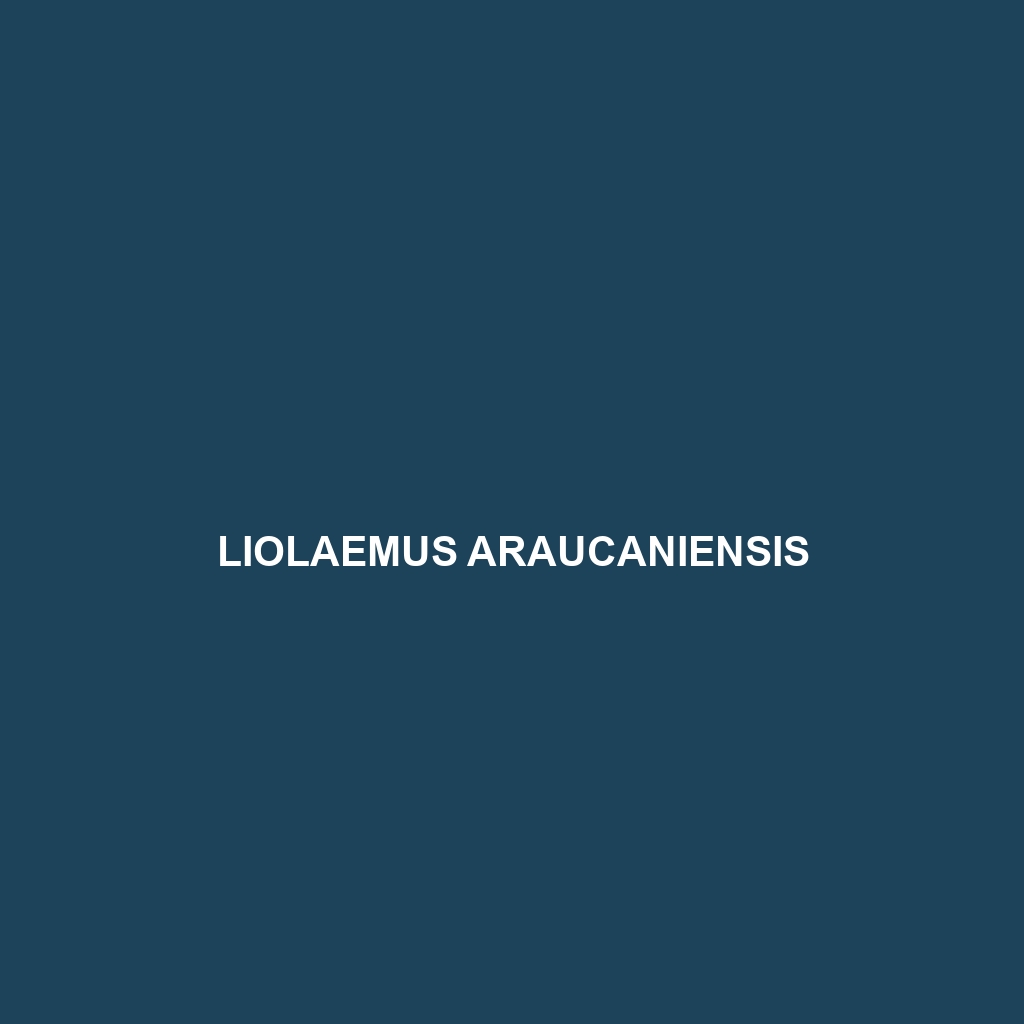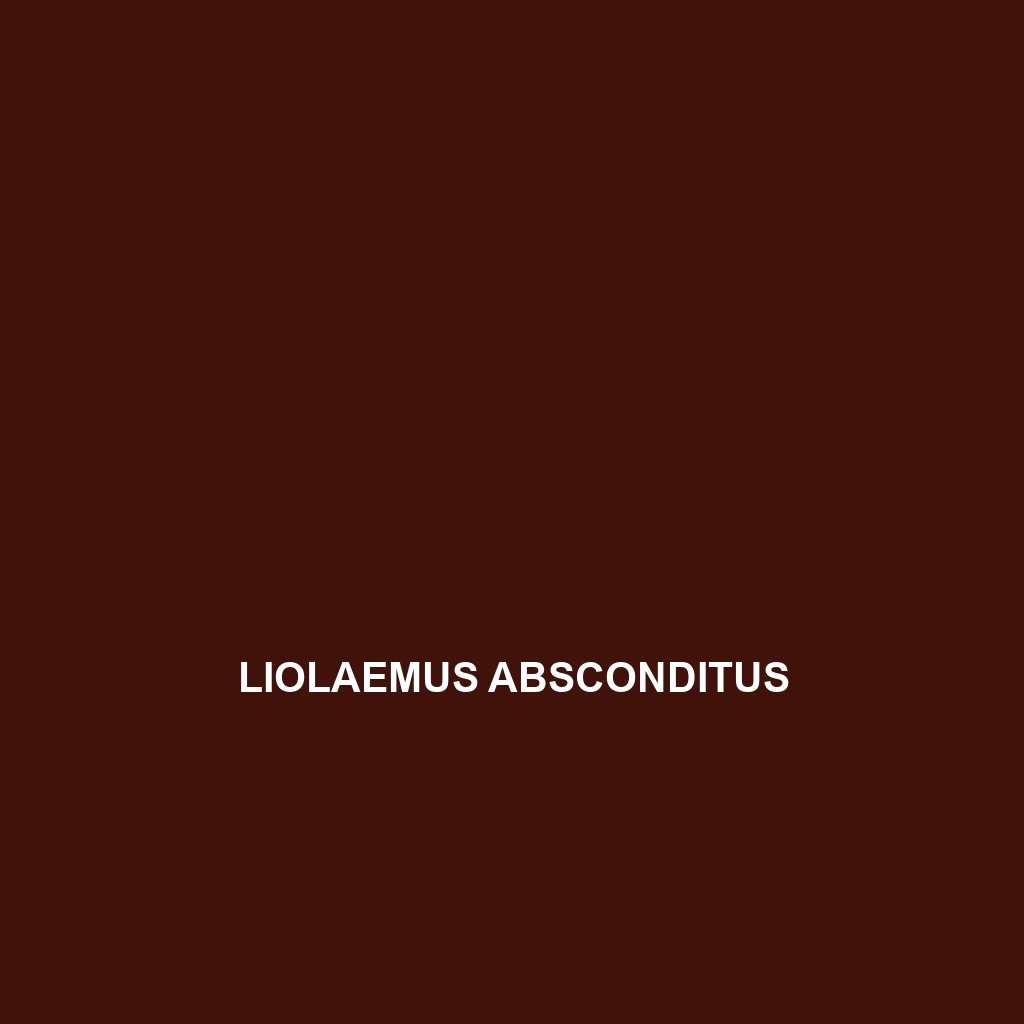<b>Phymaturus loboi</b> is a unique lizard species native to the temperate forests of Patagonia, characterized by a robust body, dark brown to olive green coloration, and a diet primarily consisting of insects. This vulnerable species plays a crucial role in its ecosystem by maintaining insect population balance and contributing to nutrient cycling.
Tag: Chilean fauna
Liolaemus tirantii
Liolaemus tirantii, commonly known as Tiranti’s Liolaemus, is a striking lizard from the Andean region of Chile and Argentina, exhibiting a range of earthy colors and adaptations for camouflage. This insectivorous species plays a vital role in its ecosystem by regulating insect populations and serving as prey for larger predators.
Liolaemus salinicola
<p><b>Liolaemus salinicola</b>, a fascinating lizard native to the saline habitats of Argentina and Chile, adapts remarkably to extreme conditions with its slender body, ranging from light brown to dark gray, and a unique reproductive strategy of birthing live young. Primarily insectivorous, this diurnal species plays a crucial role in its ecosystem by controlling insect populations and serving as prey for larger animals.</p>
Liolaemus pseudoanomalus
<p><b>Liolaemus pseudoanomalus</b> is a moderate-sized lizard found in temperate South American habitats, with a diet primarily consisting of insects and occasional plant matter. Known for its unique coloration and diurnal behavior, this species plays a vital role in controlling insect populations and aiding in seed dispersal within its ecosystem.</p>
Liolaemus pachecoi
Discover the fascinating Liolaemus pachecoi, a small, diurnal lizard endemic to the rugged Andes of northern Chile and Argentina, known for its vibrant coloration, unique camouflage, and role as both predator and prey in its alpine ecosystem. This resilient species thrives in temperate forests and rocky outcrops, maintaining ecological balance as it primarily feeds on insects while adapting to its challenging habitat.
Liolaemus cyaneinotatus
Introducing the Liolaemus cyaneinotatus, a striking lizard native to the temperate forests and grasslands of southern South America. With its vibrant blue head and dark glossy body, this agile insectivore plays a crucial role in maintaining ecological balance while showcasing unique behaviors and adaptations in its Mediterranean habitat.
Liolaemus attenboroughi
Discover the fascinating Liolaemus attenboroughi, a vibrant lizard native to the temperate forests and high-altitude grasslands of the Southern Andes, featuring striking yellow and green markings for excellent camouflage. This insectivorous species plays a vital role in its ecosystem by controlling pest populations and is currently listed as vulnerable due to habitat destruction.
Liolaemus araucaniensis
<p><b>Liolaemus araucaniensis</b>, also known as the Araucanian liolaemus, is a distinctive lizard native to the temperate forests of central Chile. Reaching up to 15 cm in length, this species boasts a robust body with greenish to brown coloration, excels in climbing, and plays a crucial role in controlling insect populations while adapting to its diverse forest habitat.</p>
Liolaemus antonietae
Discover the remarkable Liolaemus antonietae, a slender lizard native to the temperate forests and savannas of Argentina and Chile. This insectivorous species, known for its adaptive coloration and fascinating behaviors, plays a crucial role in its ecosystem by controlling insect populations while serving as prey for various predators.
Liolaemus absconditus
Liolaemus absconditus is a striking lizard species found in the temperate forests of the southern Andes, characterized by its robust body, smooth granular scales, and a diet primarily consisting of small invertebrates. This intriguing species is vulnerable due to habitat loss, making conservation efforts crucial for its survival in these unique ecosystems.









